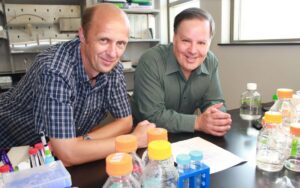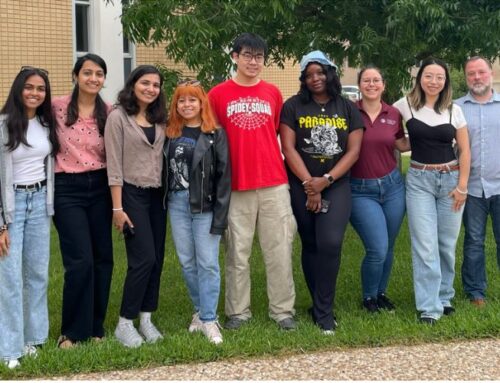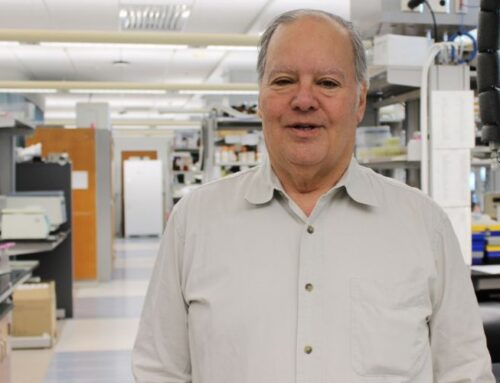Turning Cellular Insights into Lifesaving Therapies: Dr. Richard Gomer’s Quest to Calm Scar Tissue Formation
By: TAMU Biology

Sections of lungs tissue: red staining is tissue, and the white areas are the airspaces in the lungs.
What if calming the body’s wound-healing response could stop deadly diseases in their tracks? Dr. Richard Gomer, a researcher in the Department of Biology at Texas A&M University, is working to turn this bold idea into real medical breakthroughs.
Fibrosing diseases such as heart failure, pulmonary fibrosis, end-stage kidney disease, and cirrhosis of the liver involve a progressive formation of scar tissue in an organ, and there are no current treatments that stop the disease. Dr. Gomer’s lab is developing treatments for these diseases by targeting enzymes involved in the body’s overactive wound healing response. He’s also exploring how cells regulate group size and choose which direction to move, using the model organism Dictyostelium, a social amoeba—to reveal new biological principles with surprising relevance to human health, such as a new way to get immune cells to move away from a tissue.
 “Here in the Biology department, the very broad range of basic and applied research provides a great environment to learn new ideas from many different areas of research,” says Dr. Gomer. “For instance, learning about work done in a different TAMU Biology lab, where they are studying circadian rhythms in a fungus, gave us a key insight that led to a new therapeutic we are developing.”
“Here in the Biology department, the very broad range of basic and applied research provides a great environment to learn new ideas from many different areas of research,” says Dr. Gomer. “For instance, learning about work done in a different TAMU Biology lab, where they are studying circadian rhythms in a fungus, gave us a key insight that led to a new therapeutic we are developing.”
Why It Matters
Scar tissue diseases kill more people than cancer, and overactive immune responses underlie conditions like rheumatoid arthritis and acute respiratory distress syndrome (ARDS). Dr. Gomer’s discoveries—ranging from chemorepellents that steer immune cells away from inflamed tissues, to factors that control tissue growth and factors that regulate scar tissue formation—could transform how we treat a wide range of diseases.





